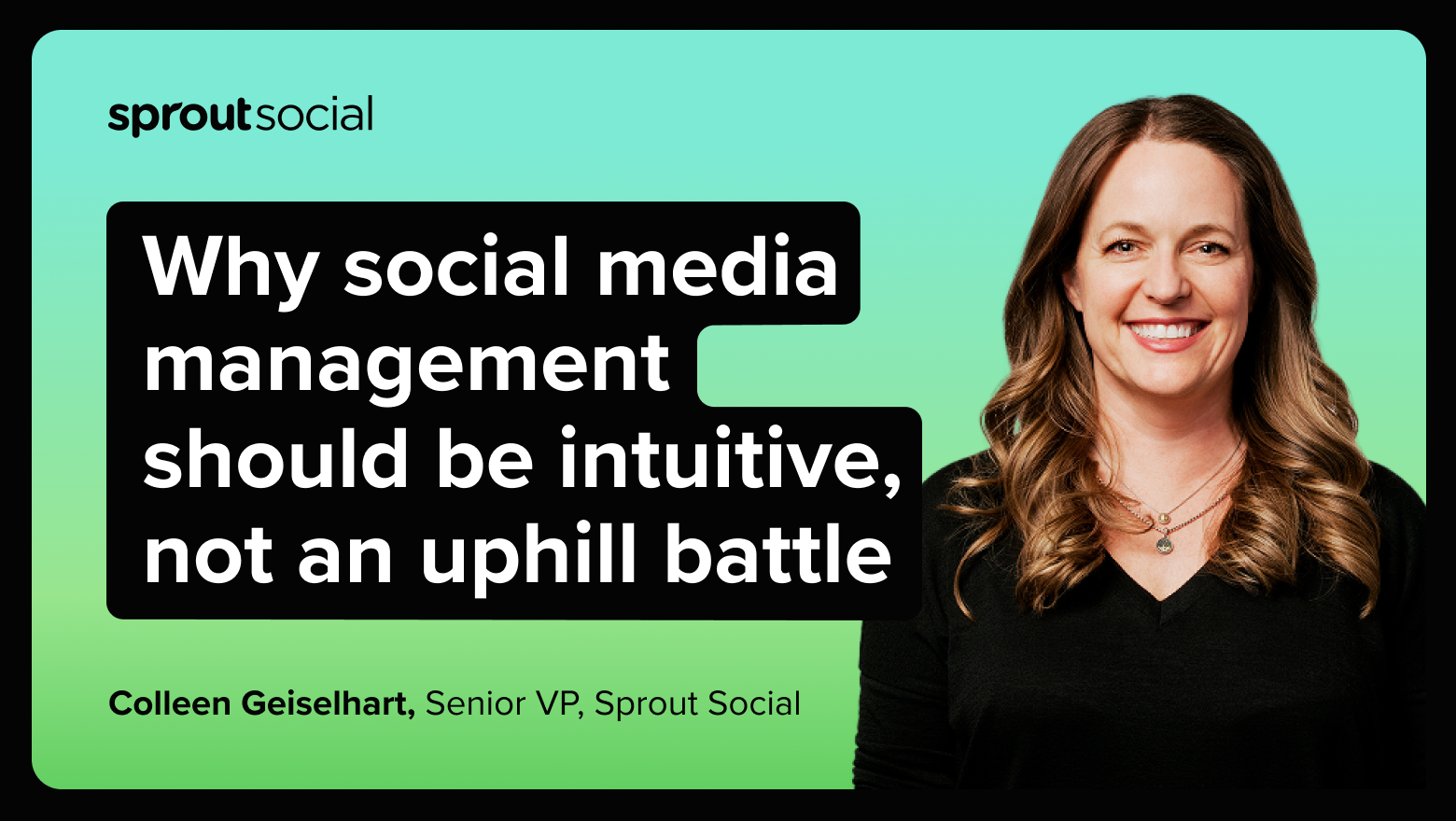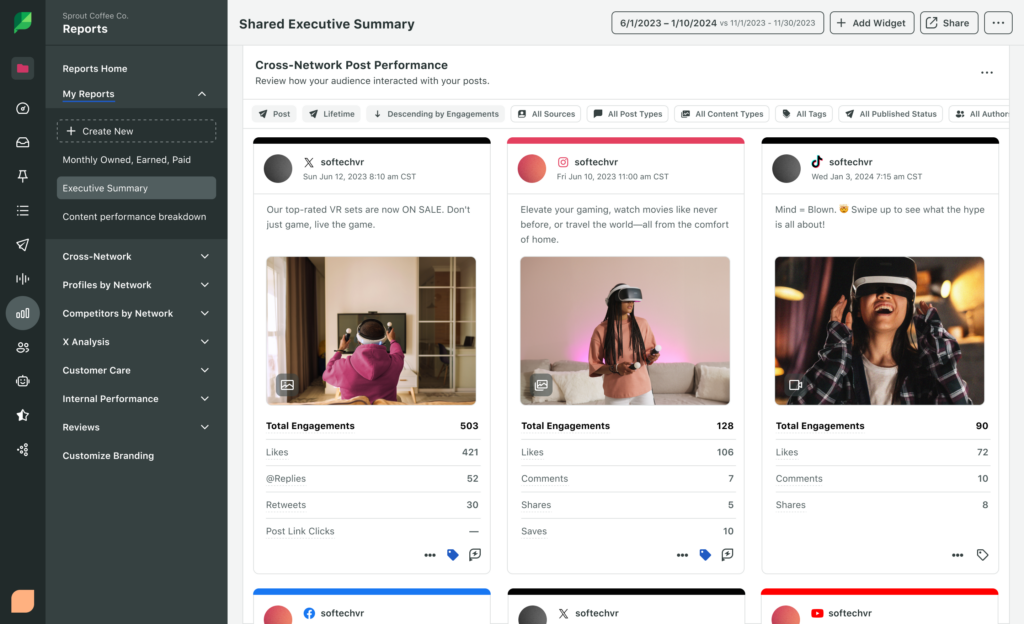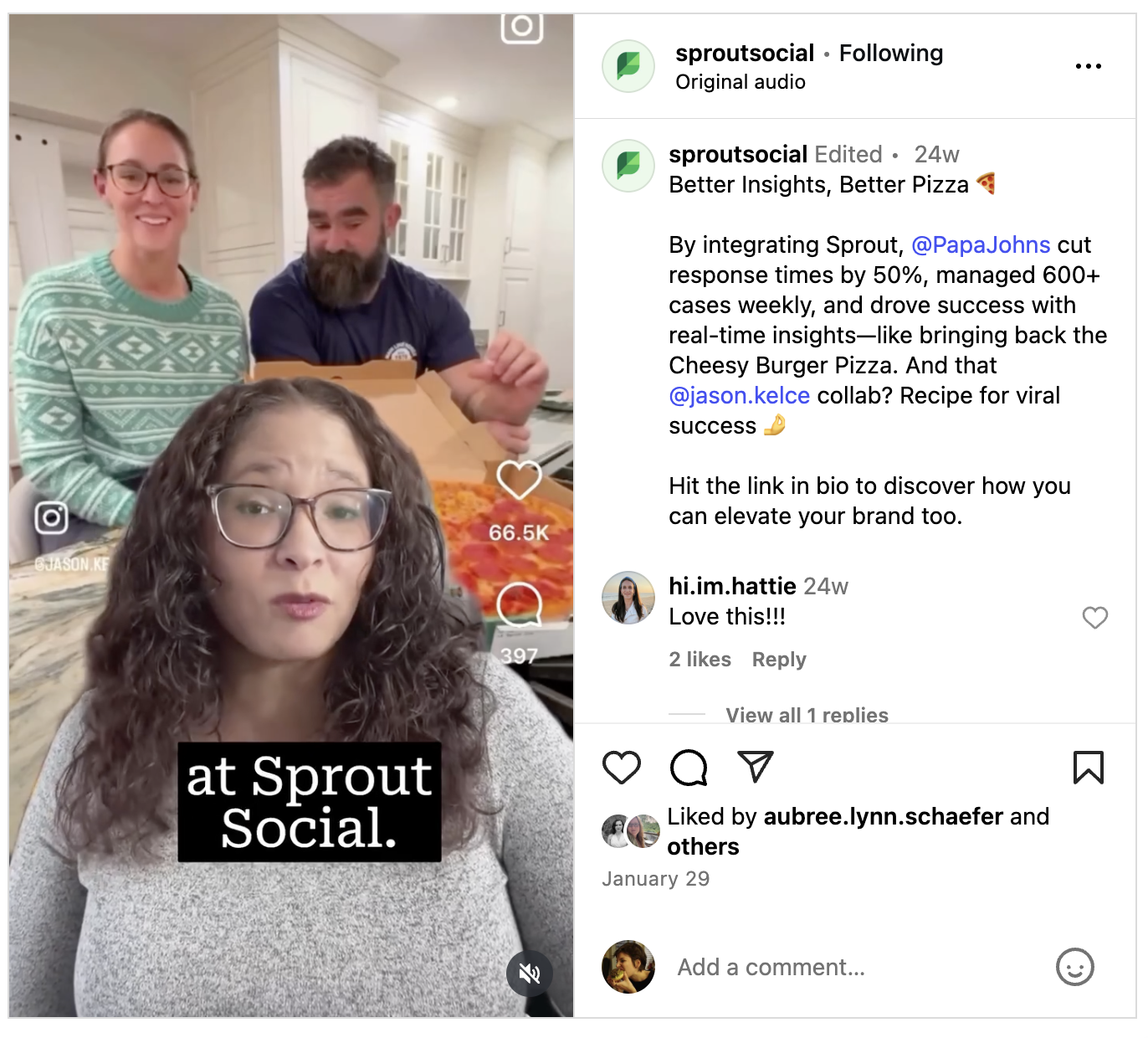Social media management should be intuitive, not an uphill battle

The social media landscape is constantly changing. Networks continue to evolve their algorithms, formats and functionality. Feeds are oversaturated. Budgets are flat. At the same time, teams are questioning whether leadership really sees the value of their work, according to The 2025 Sprout Social Index™.
Amid the chaos, too many teams end up spending more time on social media management than actual marketing—and it’s putting their brands at risk.
Social teams need more than point solutions. They need platforms that integrate with the rest of their tech stack and allow people across their organizations to act on social insights—from an intern to a social media manager to a data analyst.
When budgets are tight, investing in the wrong platform or relying on native tools just doesn’t cut it. With budgeting and planning seasons on the horizon, teams need software that gives them back time, builds confidence and helps them turn their insights into real business impact.
The risks of managing social natively
Social media teams are being asked to do more than ever. Yet, when you’re managing everything directly on native platforms, you’re working at a disadvantage. It’s harder to move quickly, collaborate and protect your brand. Native tools might be fine for posting or responding in the moment, but they fall short when it comes to long-term strategy, data and risk mitigation.
Leaving customer and performance insights on the table
If your team is posting content and replying to comments and DMs directly on each social network, you’re missing valuable insights. Native tools make it hard to track performance trends, spot shifts in customer behavior, or monitor conversations about your brand and industry. Gathering that data manually takes a lot of time. Analyzing it takes even more.
Not having enough time for strategic work
Social media management platforms give teams time back and make work scalable. Practitioners with social media management tools are twice as likely to have enough time to get their work done, compared to those without dedicated tools, per The Social Media Productivity Report.
They’re also more likely to take on strategic work like audience research and competitive analysis. When teams invest in better workflows, they don’t just save time—they free themselves up to focus on what moves the needle. And the more teams invest in their social media management workflows, the more time they save and the stronger outputs they receive from the platform.
Allowing brand crises to spiral
Relying on native networks makes it infinitely more difficult to protect your brand across channels. When monitoring natively, social practitioners have to be “on” 24/7. That’s a recipe for burnout and a big risk for your brand. Without tools that flag engagement spikes or rising negative sentiment, teams may not catch a crisis until it’s too late.
A strong social media management platform makes it easier to spot issues early. It centralizes messages, streamlines replies and keeps leadership informed in real time, so teams can step in before things escalate.
Mishandling customer data
As consumer data laws in the EU and multiple states in the US get stricter, brands face severe consequences if they fail to comply. The pressure is even more intense for brands in regulated industries, like financial services and healthcare.
Native tools don’t offer the safeguards teams need. Without a centralized system for managing data, there’s no way of ensuring customer information is collected, stored and deleted in a compliant way. For example, if a patient sends your brand personally identifiable information (PII) unprompted via DM, and your team misses the notification, you could be violating HIPAA regulations.
Businesses need to break their social insights silos
Even if teams use a social media management platform, they still might not be creating cross-functional value.
The most forward-thinking brands know that publishing content is only half the value of social media. The other half lies in what you can learn through market, customer and competitive business intelligence. Social is one of the richest sources of real-time intel, yet many teams still struggle to unlock those insights or share them with their broader organization.
According to Gartner, the #1 action CMOs are taking to improve productivity is using analytics. But getting the right insights, and making them actionable, is easier said than done.
At Sprout, we build our product to deliver value beyond the social team. From digital marketing to customer experience to the C-suite, our reporting tools are designed to surface the insights that matter most to each team. And thanks to the new Guardian by Sprout Social, this can all be done with built-in safeguards to maintain compliance and protect your customer data.

Gathering insights is only part of the equation—the next challenge is sharing them. Our Index report found that one of the top internal success metrics for social teams is how many other departments use social data to inform their work.
We democratize social media by making insights accessible to everyone. Any user can log onto our platform, get the insights they need and share them internally—whether they want to better understand your audience or act on real-time trends. Embedding this data across your organization makes social more visible and (more importantly) demonstrates the value social brings far beyond brand awareness.
When teams can access and put social insights to use, social becomes that much more integral to your business success, like it did for these brands:
Penn State Health taps into voice of the patient data
Penn State Health, a renowned multi-hospital academic health system, uses Sprout Social Listening to tap into conversations and brand sentiment. Our Listening solution allows them to access a deeper understanding of their audience’s needs, concerns and preferences, while reducing the time it takes to build reports by 70%. This invaluable information helps them identify potential crises, address patient concerns and proactively tailor their content to appeal to their community.
Papa Johns uses social listening to inspire innovation and celebrity partnerships
Papa Johns, the beloved pizza chain known for its high standards and inventive customer connections, used Sprout’s Smart Inbox and Listening solution to justify bringing back their Cheesy Burger Pizza, a customer favorite. The brand also turned to Social Listening when forging a partnership with Jason and Kylie Kelce, two of their superfans and A-list internet personalities.
Etsy shares trending insights with sellers to increase revenue
Etsy, the ecommerce brand known for selling handmade or vintage items and craft supplies, consistently uses Sprout Listening insights to identify trends. They don’t just apply these trends to their brand strategy, they share insights with sellers to improve their profitability, decrease risk and improve compliance support for issues like impending tariffs.
Social media management platforms should drive business forward, not hold teams back
Social teams shouldn’t have to fight their tools just to do their jobs.
From protecting brand reputation to driving revenue, social touches nearly every part of the business. But without the right systems in place, teams are stuck in reactive mode, struggling to surface insights, stay compliant and prove the value of their work.
That’s why intuitive, integrated social media management is a business necessity. When teams are equipped with tools that give them time back, make data more accessible and support collaboration across the organization, social becomes one of the most powerful drivers of business growth.
For more on making the case for better resources, consult The 2025 Sprout Social Index™.



Share